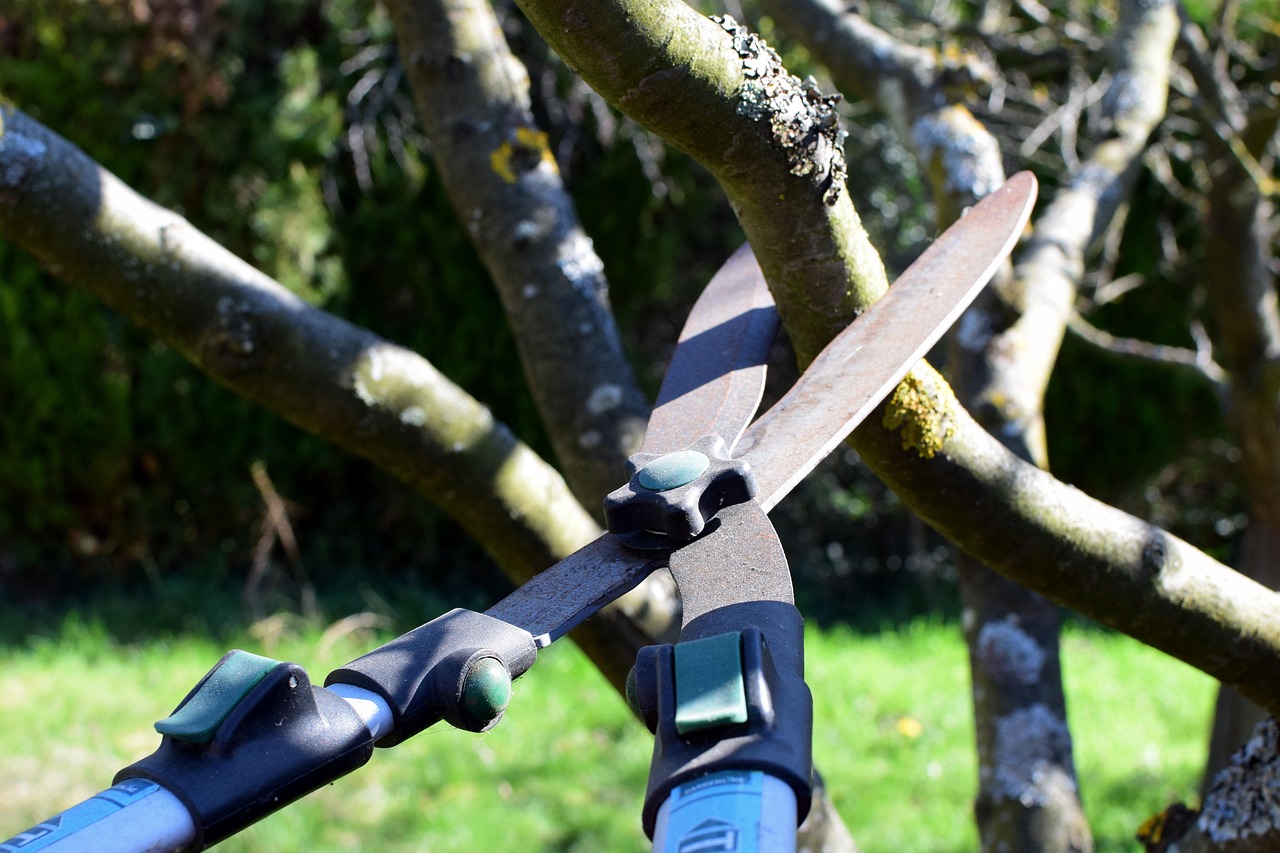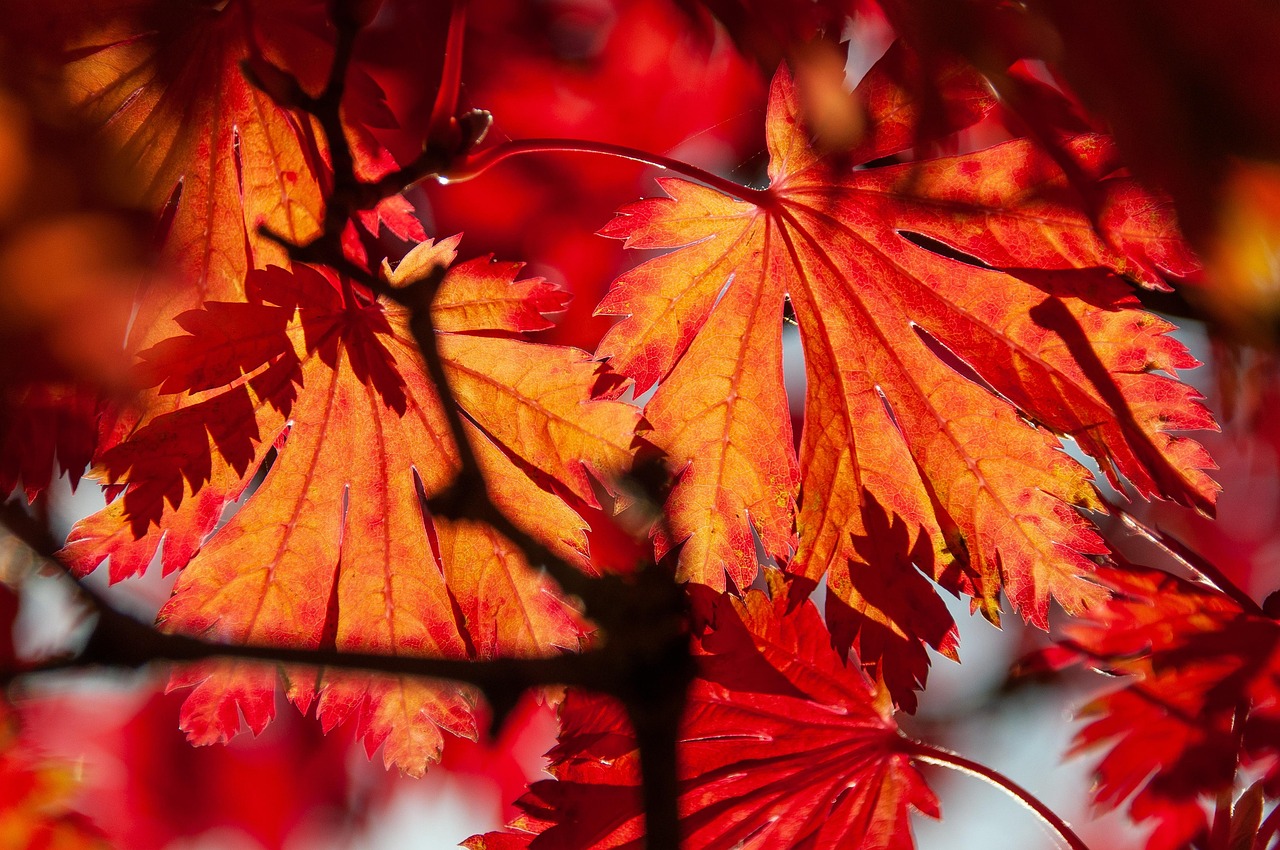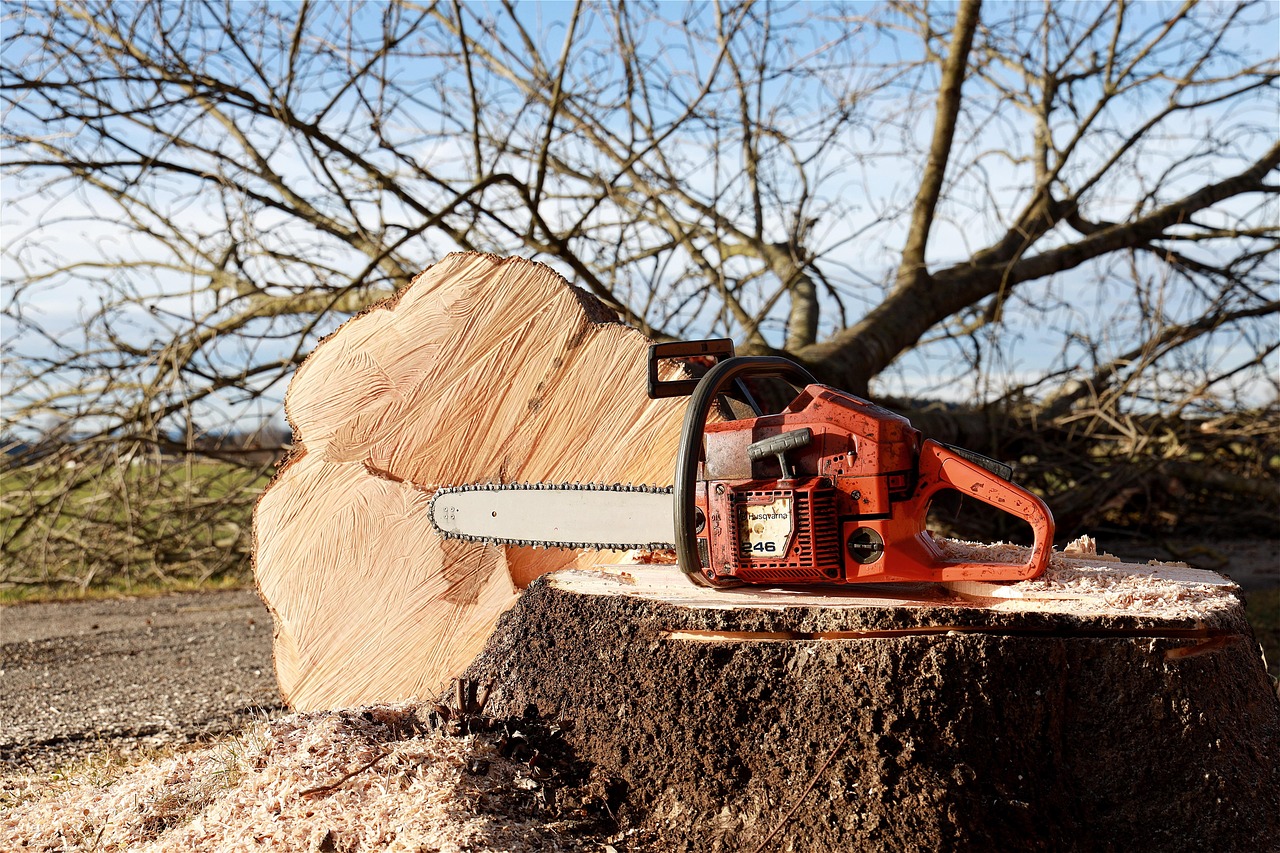Pruning orange trees is essential for maximizing citrus harvests. Proper pruning enhances sunlight exposure, promotes air circulation, and encourages healthy growth. This practice helps maintain tree structure and prevents disease, ultimately leading to a more abundant and quality fruit yield.
Orange trees are popular among gardeners and farmers alike for their delicious fruit and fragrant blossoms. However, to achieve the best possible harvest, it is crucial to understand the importance of pruning. This horticultural practice not only shapes the tree but also impacts its overall health and productivity. By removing dead or diseased branches, you can prevent the spread of pests and diseases while allowing new growth to flourish.

Pruning is not merely a seasonal chore; it is an art that requires knowledge and skill. The right techniques can significantly boost your citrus yield. Timing, tools, and methods are all vital components of effective pruning. Understanding how and when to prune can lead to healthier trees and a more plentiful harvest.
Understanding the Basics of Pruning
Before delving into specific techniques, it is essential to grasp the fundamentals of pruning. Pruning involves cutting away parts of a plant to improve its shape, health, and productivity. This practice is particularly important for fruit-bearing trees like the orange tree.
There are several key benefits to pruning orange trees:

- Improved light penetration: This allows for better photosynthesis and fruit development.
- Enhanced air circulation: Reducing humidity around the leaves helps prevent fungal diseases.
- Increased fruit quality: Pruning encourages the tree to focus its energy on fewer, high-quality fruits.
- Better accessibility: Easier harvesting and maintenance of the tree.
Understanding the growth patterns of orange trees will help you prune effectively. Orange trees usually grow in an open vase shape, which allows sunlight to reach all parts of the tree. This structure is essential for optimal fruit production.
| Growth Stage | Recommended Pruning Actions |
|---|---|
| Young Trees (1-3 years) | Focus on shaping the tree and removing any weak or crossing branches. |
| Mature Trees (4+ years) | Thin out crowded branches and remove dead or diseased wood. |
| During Fruit Development | Avoid heavy pruning; only remove any dead or unwanted branches. |
The timing of pruning is crucial. The best time to prune an orange tree is during its dormant season, typically in late winter or early spring before new growth begins. Pruning at this time minimizes stress on the tree and allows it to recover quickly as it enters the growing season.
Tools Needed for Pruning
Having the right tools will make the pruning process more efficient and effective. Here are some essential tools for pruning orange trees:

- Hand Pruners: Ideal for small branches and precise cuts.
- Loppers: Useful for thicker branches that require more leverage.
- Saw: A pruning saw is necessary for larger limbs that cannot be cut with hand pruners or loppers.
- Gloves: Protect your hands from thorns and sharp objects while working.
- Safety Goggles: Protect your eyes from debris while cutting.
Proper care of your tools is also essential. Keep them clean and sharp to ensure precise cuts, which promote quicker healing in plants. Dull tools can crush branches rather than cut them cleanly, leading to potential damage and disease entry points.
Pruning Techniques for Orange Trees
There are several techniques you can employ when pruning orange trees. Each method serves a specific purpose, depending on the desired outcome:
- Crown Thinning: This technique improves light penetration by removing selected branches in the crown of the tree.
- Crown Raising: Involves removing lower branches to increase clearance and facilitate harvesting.
- Crown Reduction: This method reduces the height of the tree for easier management while maintaining its shape.
Each technique requires a different approach, but all aim to enhance the health and productivity of the tree. Knowing when and how to apply these techniques ensures that you maximize your citrus harvest effectively.

Seasonal Pruning Considerations
Understanding the seasons is vital to effective pruning and maximizing orange tree health. Each season presents different opportunities and challenges for pruning. Knowing when to prune based on the tree’s growth cycle can significantly influence fruit production.
Winter Pruning
Winter is often considered the best time for major pruning tasks. This period occurs while the tree is dormant, allowing for minimal stress and optimal recovery. Key activities during winter pruning include:
- Removing Dead or Diseased Wood: Inspect the tree for any branches that show signs of disease, decay, or damage. Remove these branches to prevent the spread of pathogens.
- Shaping the Tree: Focus on creating a balanced structure. This ensures that sunlight can reach all parts of the tree.
- Thinning Crowded Areas: Identify areas where branches are crossing or overcrowded. Reducing competition allows for better airflow and light penetration.
Spring Pruning
Spring is a critical time as new growth begins. While heavy pruning should be avoided, light maintenance can be beneficial. Activities to consider during spring include:
- Removing Suckers: Suckers are vigorous shoots that grow from the base of the trunk or lower branches. They divert energy away from fruit production and should be removed promptly.
- Minor Shaping: Conduct minor adjustments to maintain the desired shape of the tree without removing significant amounts of foliage.
- Assessing Flower Development: Monitor flower development to determine which branches are producing flowers. This can guide future pruning decisions.
The Role of Fertilization in Pruning Success
Fertilization plays a crucial role in conjunction with pruning. After pruning, the tree may require additional nutrients to support new growth. Understanding how to fertilize before and after pruning can enhance overall tree health.
Types of Fertilizers
Different types of fertilizers can be used to support orange tree health:
- Granular Fertilizers: These are slow-release fertilizers that provide a steady supply of nutrients over time.
- Liquid Fertilizers: These provide nutrients quickly and can be absorbed rapidly by the tree.
- Organic Options: Compost or well-rotted manure can enrich the soil, improving its structure and nutrient content.
Timing for Fertilization
The timing of fertilization is just as important as the type used. Here are some guidelines:
- Before Pruning: Applying fertilizer before pruning can invigorate the tree and prepare it for growth. This encourages strong new shoots after pruning.
- After Pruning: Fertilizing after pruning helps support recovery and new growth. This is particularly beneficial in late spring when the tree begins to leaf out.
| Fertilization Timing | Purpose |
|---|---|
| Before Pruning | Stimulate growth to prepare for new foliage. |
| After Pruning | Aid recovery and promote vigorous new growth. |
| Mid-Summer | Support fruit development as trees begin to set fruit. |
Pest and Disease Management Post-Pruning
Pest and disease management is a crucial aspect of maintaining healthy orange trees, especially after pruning. Open cuts can attract pests or allow diseases to enter the tree.
Common Pests
Several pests pose threats to orange trees, and awareness is key to preventing infestations:
- Aphids: Small insects that feed on sap; they can weaken trees and transmit diseases.
- Citrus Leafminers: These pests create tunnels in leaves, impacting photosynthesis.
- Citrus Thrips: They cause scarring on fruit, affecting quality.
Disease Prevention
Understanding common diseases can help in prevention strategies. Some prevalent diseases include:
- Citrus Canker: A bacterial disease that causes lesions on leaves and fruit.
- Root Rot: Often caused by overwatering, leading to weakened roots.
- Powdery Mildew: A fungal disease that appears as white powder on leaves, affecting photosynthesis.
A good practice after pruning is to apply organic fungicides or insecticides if you notice any signs of pests or diseases. Regular monitoring will help you catch problems early, ensuring your orange trees remain healthy and productive.
Harvesting and Post-Pruning Care
After successfully pruning your orange trees, the next critical phase is harvesting and post-pruning care. These steps are essential to ensure that the efforts put into pruning translate into a bountiful and high-quality citrus harvest.
Timing the Harvest
Harvesting oranges at the right time is vital for achieving maximum flavor and quality. Oranges do not continue to ripen significantly after being picked, so timing is crucial. Here are some factors to consider:
- Color Change: Most orange varieties change from green to a bright orange color when ripe. However, some varieties may remain somewhat green even when ripe.
- Fruit Size: Ripe oranges should be plump and full-sized, indicating they have developed all necessary sugars.
- Taste Testing: One of the best ways to determine ripeness is by tasting a sample. If it’s sweet and juicy, it’s likely ready for harvest.
Harvesting Techniques
Using the proper harvesting techniques ensures that you do not damage the tree or the fruit itself. Here are some recommended practices:
- Use Sharp Tools: A pair of hand pruners or clippers can be used to cut the fruit from its stem cleanly.
- Avoid Pulling: Do not pull the oranges off the tree, as this can damage both the fruit and the branches.
- Harvest in Dry Conditions: Picking during dry weather helps prevent fungal infections that can develop on wet fruit.
Post-Harvest Care
After harvesting, it is important to care for your orange trees properly to prepare them for the next growing season:
- Watering: Continue to water the trees adequately but avoid overwatering, which can lead to root rot.
- Fertilization: Apply a balanced fertilizer after harvest to replenish nutrients in the soil.
- Pest Monitoring: Keep an eye out for pests that may target fruits still on the tree or newly formed fruits.
Understanding Different Orange Varieties
Different varieties of orange trees may require slightly different pruning techniques and care strategies. Knowing the specific needs of each variety can enhance your overall citrus production.
| Variety | Characteristics | Pruning Needs |
|---|---|---|
| Navel Orange | Seedless, sweet, and easy to peel; ideal for fresh eating. | Moderate pruning; focus on shaping and removing dead wood. |
| Valencia Orange | Juicy with seeds; great for juicing. | Light thinning; maintain an open canopy for sunlight exposure. |
| Blood Orange | Distinctive red flesh; unique flavor profile. | Similar to Navel; requires careful shaping for optimal growth. |
Caring for Specific Varieties
Caring for each orange variety involves tailored approaches based on their growth habits and fruiting characteristics. For instance:
- Navel Oranges: These trees tend to grow more compactly, so moderate pruning is necessary to encourage proper air circulation without over-thinning.
- Valencia Oranges: These trees often require light thinning to maintain an open structure, allowing sunlight to reach all branches for optimal fruit development.
- Blood Oranges: Similar care and pruning techniques as Navel oranges are effective, but pay attention to their unique growth patterns and fruiting behavior.
Environmental Factors Affecting Pruning and Harvesting
The environment plays a significant role in the success of orange tree cultivation. Understanding how various factors affect pruning and harvesting can lead to more fruitful results.
Climate Considerations
The ideal climate for orange trees includes warm temperatures and adequate sunlight. Here are some climate-related factors to consider:
- Temperature: Orange trees thrive in temperatures between 70°F and 100°F. Extreme cold can damage trees and fruit.
- Sunlight: Ensure trees receive at least 6-8 hours of direct sunlight daily for optimal growth and fruit production.
- Humidity: Moderate humidity levels are best. Excessive moisture can lead to fungal diseases.
Soil Quality
The quality of soil directly impacts the health of orange trees. Consider the following elements:
- Drainage: Well-draining soil prevents root rot. Sandy loam is often ideal for orange trees.
- Nutrient Content: Conduct soil tests to determine nutrient levels. Amend soil as needed with organic matter or fertilizers.
- pH Levels: Orange trees prefer slightly acidic soil (pH 6-7). Adjust pH levels through amendments if necessary.
By understanding these environmental factors and adapting your pruning, harvesting, and care techniques accordingly, you can maximize your orange tree’s health and productivity throughout its growing cycle.
Additional Tips for Successful Orange Tree Care
In addition to the comprehensive pruning practices discussed, several other tips can enhance the overall health and productivity of your orange trees. Implementing these practices will ensure that your citrus trees thrive and yield an abundant harvest.
Mulching
Applying mulch around the base of your orange trees offers numerous benefits. Here are some advantages of mulching:
- Moisture Retention: Mulch helps retain soil moisture, reducing the need for frequent watering.
- Temperature Regulation: It insulates the soil, keeping it cooler in the summer and warmer in the winter.
- Weed Control: A good layer of mulch suppresses weed growth, which can compete with your trees for nutrients and water.
Regular Monitoring
Consistent monitoring of your orange trees is crucial. By observing their health and growth, you can catch potential problems early. Here are some monitoring tips:
- Inspect Leaves and Fruit: Look for signs of pests, diseases, or nutrient deficiencies. Yellowing leaves or unusual spots may indicate issues that need addressing.
- Check Soil Moisture: Use a moisture meter or simply check the soil with your fingers to ensure it is not too dry or overly saturated.
- Track Growth Patterns: Keep a journal of your trees’ growth and fruiting cycles. This can help you adjust care practices as needed.
Pruning Resources
For those looking to deepen their understanding of orange tree pruning, various resources are available. Here are some suggestions:
- Books: Look for horticultural books focused on citrus tree care. These often provide in-depth information on specific varieties and care techniques.
- Online Courses: Consider enrolling in gardening courses online that specialize in fruit tree management.
- Local Gardening Clubs: Joining a local gardening club can provide hands-on experience and access to community knowledge about citrus cultivation.
Common Mistakes to Avoid
Avoiding common pitfalls can make a significant difference in the success of your orange tree care. Here are some mistakes to watch for:
- Over-Pruning: Removing too much foliage can stress the tree and reduce fruit production. Always practice moderation.
- Poor Timing: Pruning at the wrong time can hinder growth. Stick to recommended schedules based on the tree’s growth cycle.
- Ineffective Watering Practices: Both overwatering and underwatering can harm trees. Establish a consistent watering routine based on seasonal needs.
Conclusion
Pruning orange trees is an essential practice that directly influences the quality and quantity of citrus harvests. By understanding the fundamentals of pruning, timing, and care for different varieties, you can enhance the health of your trees. Additionally, paying attention to environmental factors, soil quality, and pest management will further improve your overall success.
The art of pruning orange trees requires patience, knowledge, and practice. By following the guidelines outlined in this article, you will be well on your way to enjoying a bountiful harvest of delicious oranges year after year. Remember, a well-cared-for tree not only produces better fruit but also contributes to a thriving garden environment.
Your journey into orange tree cultivation should be rewarding and educational. As you gain experience, you’ll discover what works best for your specific conditions and preferences. Happy gardening!
